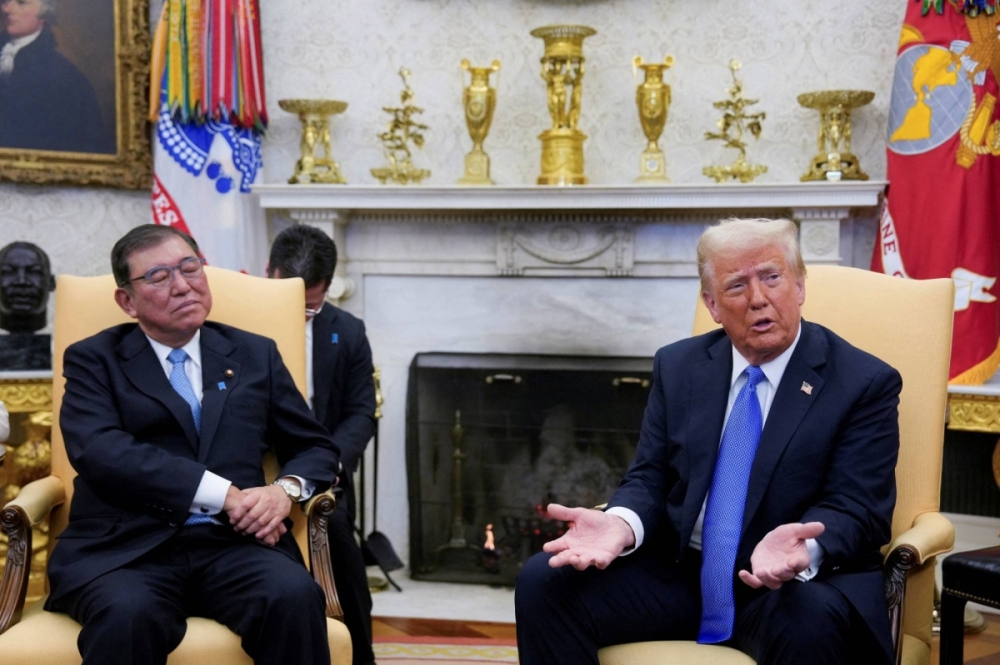WNAM REPORT: As Washington and Tokyo prepare to launch key tariff negotiations, U.S. President Donald Trump has once again criticized the 1960 security treaty with Japan as “one-sided,” rekindling Japanese fears he might use the talks to ask Tokyo to pay more for hosting American troops, buy more U.S.-made weapons or further boost defense spending.
“We pay hundreds of billions of dollars to defend them, but … they don’t pay anything,” Trump told reporters Thursday in Washington.
“If we’re ever attacked, they don’t have to do a thing to protect us,” he added, marking the second time in as many months that he has questioned the decades-old alliance and voiced displeasure with what he views as an unfair partnership with Japan — remarks he also made during his first term.
Back in March, Tokyo was quick to set the record straight, noting that the original security treaty does allow for a joint response for protecting Japan and that legislation passed in 2015 greatly expanded the scope of mutual protection under certain circumstances.
Moreover, Japan, which hosts about 50,000 American troops, contributes some $2 billion annually to cover expenses such as utilities, facility maintenance and wages for Japanese staff at U.S. military bases as part of the bilateral Special Measures Agreement (SMA), which is up for renewal in 2027.
However, Trump has long argued that this isn’t enough and reportedly even demanded during his first term that Tokyo quadruple SMA payments to $8 billion per year — or risk U.S. troop withdrawal.
While Japan managed to fend off those demands back in 2019, it’s got its work cut out this time around as Washington’s new ambassador to Tokyo, George Glass has already said he will “undoubtedly” need to press Japan to contribute more money while also having “tough conversations” about the allies’ economic relationship.
In addition, Elbridge Colby, the Pentagon’s new Undersecretary of Defense Policy, has made it clear that the Trump administration expects Japan to further hike its military budget saying that the country should spend “at least 3% of GDP (gross domestic product) on defense as soon as possible.”
Under the current plans, Japan only expects to reach a 2% spending target by fiscal 2027.
During his visit to Japan in late March, Colby’s boss, Defense Secretary Pete Hegesth, was full of praise for Tokyo, calling it a “model ally” and saying the alliance has “never been stronger.”
Asked if he had broached the defense spending or cost-sharing issues with Defense Minister Gen Nakatani, Hegseth said that while the two allies did not talk specific numbers, they both “recognize that everybody needs to do more.”
While Japan is considering sending a team of negotiators as early as next week to Washington to discuss tariffs, Trump’s transactional approach to foreign policy and the timing of his remarks on the U.S-Japan defense pact suggests that nothing may be off the table, including Washington’s level of defense commitment to a decades-old “model ally.”


